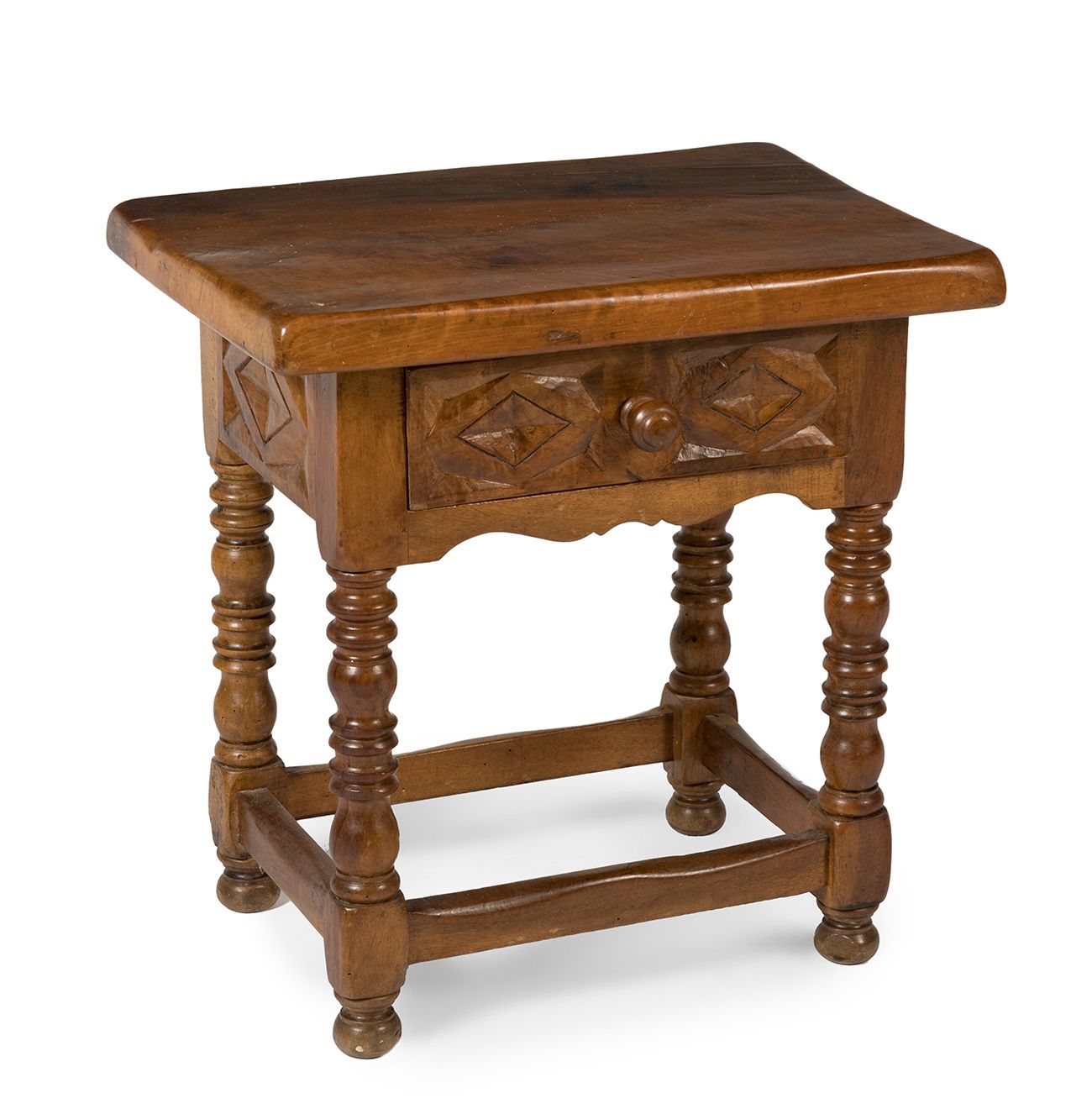Description
Baroque style side table. Spain, 19th century. Walnut wood. Presents xylophages. Needs refinishing. Signs of wear and tear. Measurements: 53 x 51 x 37 cm. This baroque style table perfectly represents the tradition of Spanish furniture from the 16th century to the 20th century. In the Middle Ages, as was the case in the 16th century, the tables of the courts and great houses were simple tables on tassels, where the richness lay in the rich fabrics that covered them. It is therefore a very widespread table model in Spain, consisting of a rectangular tabletop, a frieze with one or more drawers on the front and legs joined by footings or chambranas of different shapes. The difference lies in the decorative richness, which will depend on the economic possibilities of the client. The table presented here is particularly rich, with turned legs and feet and carving on the front of the drawer. The carving of the drawer is entirely geometric, still of Mannerist heritage, as is common in 17th-century popular furniture. Thus, we see rhomboidal and faceted motifs. Also noteworthy is the highly complex turning of the legs, which alternates lentils and balusters, a highly dynamic pattern that faithfully follows the Baroque style.
80
Baroque style side table. Spain, 19th century. Walnut wood. Presents xylophages. Needs refinishing. Signs of wear and tear. Measurements: 53 x 51 x 37 cm. This baroque style table perfectly represents the tradition of Spanish furniture from the 16th century to the 20th century. In the Middle Ages, as was the case in the 16th century, the tables of the courts and great houses were simple tables on tassels, where the richness lay in the rich fabrics that covered them. It is therefore a very widespread table model in Spain, consisting of a rectangular tabletop, a frieze with one or more drawers on the front and legs joined by footings or chambranas of different shapes. The difference lies in the decorative richness, which will depend on the economic possibilities of the client. The table presented here is particularly rich, with turned legs and feet and carving on the front of the drawer. The carving of the drawer is entirely geometric, still of Mannerist heritage, as is common in 17th-century popular furniture. Thus, we see rhomboidal and faceted motifs. Also noteworthy is the highly complex turning of the legs, which alternates lentils and balusters, a highly dynamic pattern that faithfully follows the Baroque style.
